
Transport in the Kingdom of Saudi Arabia refers to its land, maritime, and air transport network. The total road length is approximately 268,000 km, including about 75,000 km of intercity roads. The Ministry of Transport and Logistic Services is responsible for managing and regulating the land, maritime, and air transport systems in the Kingdom. National Transport and Logistics Strategy The National Transport and Logistics Strategy represents a significant shift in leveraging the Kingdom’s ca...
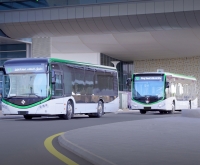
Riyadh Bus Network integrates with Riyadh Metro as part of the King Abdulaziz Project for Riyadh Public Transport. The buses operate through a set of routes covering the city’s main streets and several secondary streets, connecting the capital's districts with commercial centers. The network was developed in several phases. October 20, 2009 The Custodian of the Two Holy Mosques King Salman Bin Abdulaziz Al Saud, while serving as Chairman of the Royal Commission for Riyadh City (RCRC ), s...
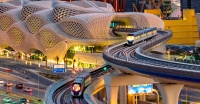
The Riyadh Metro project is considered the backbone of the public transport system in Riyadh City , the capital of the Kingdom of Saudi Arabia. This is due to its ability to address the challenges faced by the city, such as the growing population and its impact on infrastructure, especially roads and traffic. The idea for the project originated with the construction of a backbone for public transport in the form of an electric train and buses to cover the entire city. This idea was first presen...
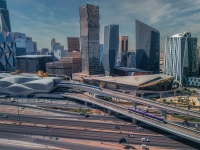
Riyadh Metro is a rapid transit system serving the residents of Riyadh City , the capital of the Kingdom of Saudi Arabia. It was inaugurated by the Custodian of the Two Holy Mosques King Salman Bin Abdulaziz Al Saud on November 27, 2024. Below are the phases of operation for Riyadh Metro lines: December 1, 2024 Operation of three lines: the Blue Line along the axis of al-Olaya – al-Batha roads; the Yellow Line along the axis of King Khalid International Airport Road; and the Purple Line along...
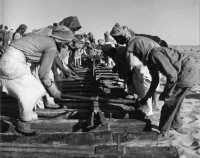
The first railway line in the Kingdom of Saudi Arabia was inaugurated in 1951, connecting Dammam and Riyadh . The idea for the railway emerged alongside the plan to establish a commercial port on the Arabian Gulf Coast. This port was intended to receive ships carrying oil exploration equipment and oil tankers. The Founder King Abdulaziz Bin Abdulrahman Al Saud approved the plan and ordered its immediate execution. Construction of the railway began in October 1947, and in October 1951, King Abdu...
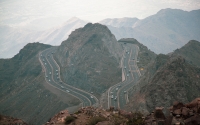
Aqabat al-Kurr, also known as al-Hada Road and Tal'at Karra , is the mountain road crossed by the road connecting Makkah al-Mukarramah City and Taif Governorate to the west, through al-Hada Mountain, which reaches a height of about 2,177 m above sea level. Al-Hada Road is the only one in Makkah al-Mukarramah Province where trucks and large buses are prohibited from traveling throughout the year. Aqabat Al-Kurr history The history of Aqabat al-Kurr, also known as al-Hada Road, stretches bac...
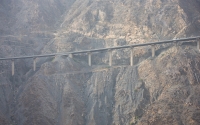
Aqabat Shaar is the third-longest mountain road in the Kingdom of Saudi Arabia . It is located in Aseer Province and connects the city of Abha to the governorate of Muhayil Aseer . The length of its road is 14.2 km, and it includes eleven tunnels. Aqabat Shaar designation The Arabic linguistic origin of the word Shaar indicates a marker or separation boundary and is also associated with the Shaar Castle located in the region – a fitting military name in military custom to identify the locatio...
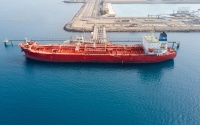
King Fahad Industrial Port in al-Jubail was inaugurated in 1982, during the reign of King Fahd Bin Abdulaziz Al Saud, to serve the industrial city and complex in al-Jubail . The port is strategically located in proximity to the factories of al-Jubail Industrial City , making it the main crossing point for their products. King Fahad Industrial Port is the largest industrial port in the Middle East. It is operated for the import of raw materials for local industries and the export of petrochemica...
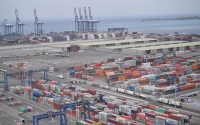
The Kingdom of Saudi Arabia overlooks three bodies of water: the Red Sea, the Gulf of Aqaba, and the Arabian Gulf. The Saudi Ports Authority supervises ten main ports, including four economic ports. Jeddah Islamic Port One of the oldest Saudi ports, it was established during the reign of the Rashidi Caliph Uthman Bin Affan, in 646. It is the first port that operated in marine trade on the Red Sea coast. It currently receives 75 percent of imports from Saudi ports. Yanbu Commercial Port The seco...
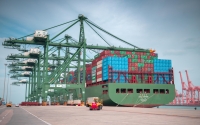
King Abdulaziz Port in Dammam covers an area of nineteen km 2 . It includes forty-three berths and three terminals. It has a capacity of around 105 million t, and its terminals are operated by around fourteen operators. The port is located on the Arabian Gulf in the city of Dammam and was established by Saudi Aramco under the orders of the Founder, King Abdulaziz Bin Abdulrahman Al Saud to meet the demands of the oil industry. It is one of the main ports in the Kingdom and a major entryway for ...
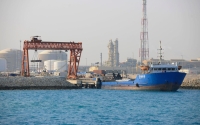
The construction of Ras al-Khair Port, situated in the city of Ras al-Khair , on the coast of the Arabian Gulf, began in 2008. It was inaugurated in 2016. It is located at around eighty km from Jubail Industrial City . It is considered the newest industrial port in the Kingdom of Saudi Arabia . With an area of approximately twenty-three km 2 , the port serves more than one hundred industrial projects. It is equipped with fourteen berths for receiving ships, a terminal with four facilities, with...
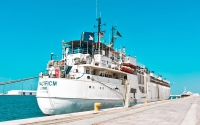
Jazan Port was inaugurated in 1976 during the reign of King Khalid Bin Abdulaziz Al Saud. The port underwent three development phases that included the construction of berths, two levees, and a control tower, along with several service facilities. During the year in which Jazan Port was established, the Kingdom of Saudi Arabia faced a challenge due to ports' overcrowding, which called for the establishment of the General Organization of Ports (currently known as the Saudi Ports Authority )...